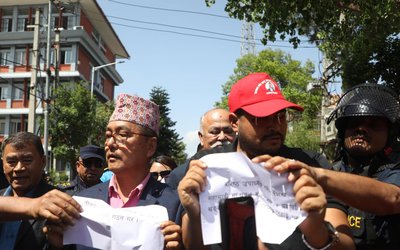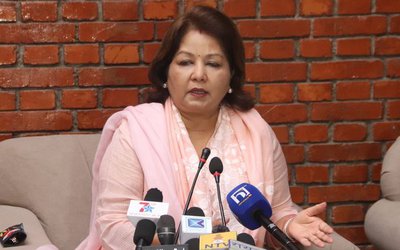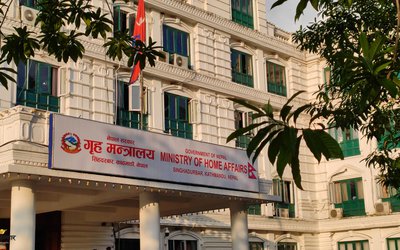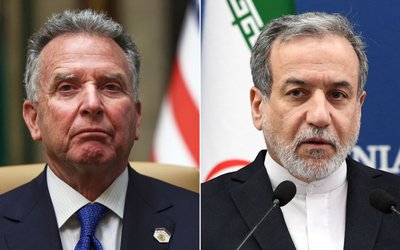After democracy was ushered in Nepal in 1950, it was felt that a local MP could realistically ask roads for his constituency and then education and health facilities. All this was for improving the lot of the people. Translating this into reality meant either a primary or secondary school in one case and a health post or a district hospital in another. Asking for a hydropower project seemed incomprehensible and impossible.
Now the times have changed. The district hospitals and PHC centres have come up in almost all the districts and all constituencies. Even the requests for medical colleges have reached almost twenty and are increasing. What is the limit? No one seems to have an answer. The health of the people has definitely improved, but not because of the government input. It is due to involvement of the private sector. As we glance at the pages of our daily newspapers, we read of health institutions without doctors, nurses or other paramedical staff, equipment lying idle or out of order or even leaking roofs and falling walls of health institutions. Then there is the question of drugs which are either expired or not available at all! One reads from time to time about the aggressiveness of the patient’s parties towards health care personnel. All this is taking place when our new constitution is going to embody Health Rights as a basic right of the Nepali people.
Similar is the case with education. During King Mahendra’s reign, the slogan ‘Education for All’ was printed on stamps and circulated widely in Nepal and abroad. That utterance is still to be realised and though considerable contribution has been made by the private sector, there is still a lot amiss. Ripping the gullible public by way of annual admission fees in the same school or by selling ‘compulsory’ overpriced textbooks which are hardly ever used are just two examples of rampant malpractices. In the public sector schools without walls, non-existent schools where deputed teachers collect pay regularly are also news that one reads about in our daily papers.
In this second millennium, some fortunate districts of Nepal were chosen for hydropower projects. The interparty bickering, which always occurs, has deprived the country of substantial electrical energy that would have been generated by now. We, the common folks, continue to suffer load-shedding and are likely to do so for some years to come. The future is indeed bleak as our major parties which clandestinely seem to be playing musical chairs are ever true to form – agree to everything, and then deny all or part to backtrack. Hurrah for such leaders.
The CIAA has warned government officials of the Ministry of Education and also those of the Ministry of Health and Population to be ready to face action if they do not comply with the directives of the anti-graft constitutional body. All this brings to one’s mind a letter written on 16th April 2013 by an Under Secretary of the CIAA prior to the appointment of Lok Man Karki taking charge of the institution. This letter was sent to the Nepal Medical Council, Medical Colleges, Universities, Education Ministry and Health Ministry. This missive, which dwells on the standards being followed, has raised many questions about the functioning that need to be rectified. The Nepal Medical Council Act is in dire need of revision but who is going to bell the cat. Another example for correction too is the functioning of the CTEVT, an institution responsible for the production of health and other technical manpower below the level of graduates.
All this simply means that both the Education and the Health Ministry are in major need of overhaul. The Nepal Medical Association called a meeting recently trying to whip up enthusiasm and support for lobbying Nepal Government to revise the Nepal Medical Council Act which needs to be thoroughly revised.
The Ministry of Health and Population in terms of numbers is still the largest ministry and needs to be organised if it is to function effectively and serve the interests of the people. Though not a realistic slogan, the Health For All 2000 is now a forgotten dream!
It has still to put its own house in order. The Nepal Health Act, though it has been amended a number of times has still to be implemented. Acts pertaining to the various councils relating to various aspects of health delivery have still to be updated and functioning properly.
Coming to the Education Ministry we have been hearing about an Open University for over two decades. Even the setting up of other universities by the passing of the “Umbrella Act” would solve some problems but this is not being allowed to be implemented by way of Act or Ordinance. This interim government of Khil Raj Regmi could do a great deal by passing this Umbrella Act by an ordinance and regulating this sector. Then we could have single or multiple subjects/sciences university, on a localised, regional or country-wide basis. A Medical University, encompassing the different aspects of health, in both the Public and Private sectors, could be thought about. Even a Deemed University should be allowed to the private sector and should not be restricted to the public only. Steps such as this will improve the status of education and health and save a lot of the foreign exchange that is going out of the country.

Hemang Dixit
The author writes fiction under the name of Mani Dixit. Website: www.hdixit.org.np. Twitter: @manidixithd
- Top Heavy
- Sep 20, 2023
- Most Able?
- Sep 04, 2023
- Changing Times
- Aug 21, 2023
- Nepali Shenanigans
- Aug 03, 2023
- Budget Naataks
- Jun 29, 2023













